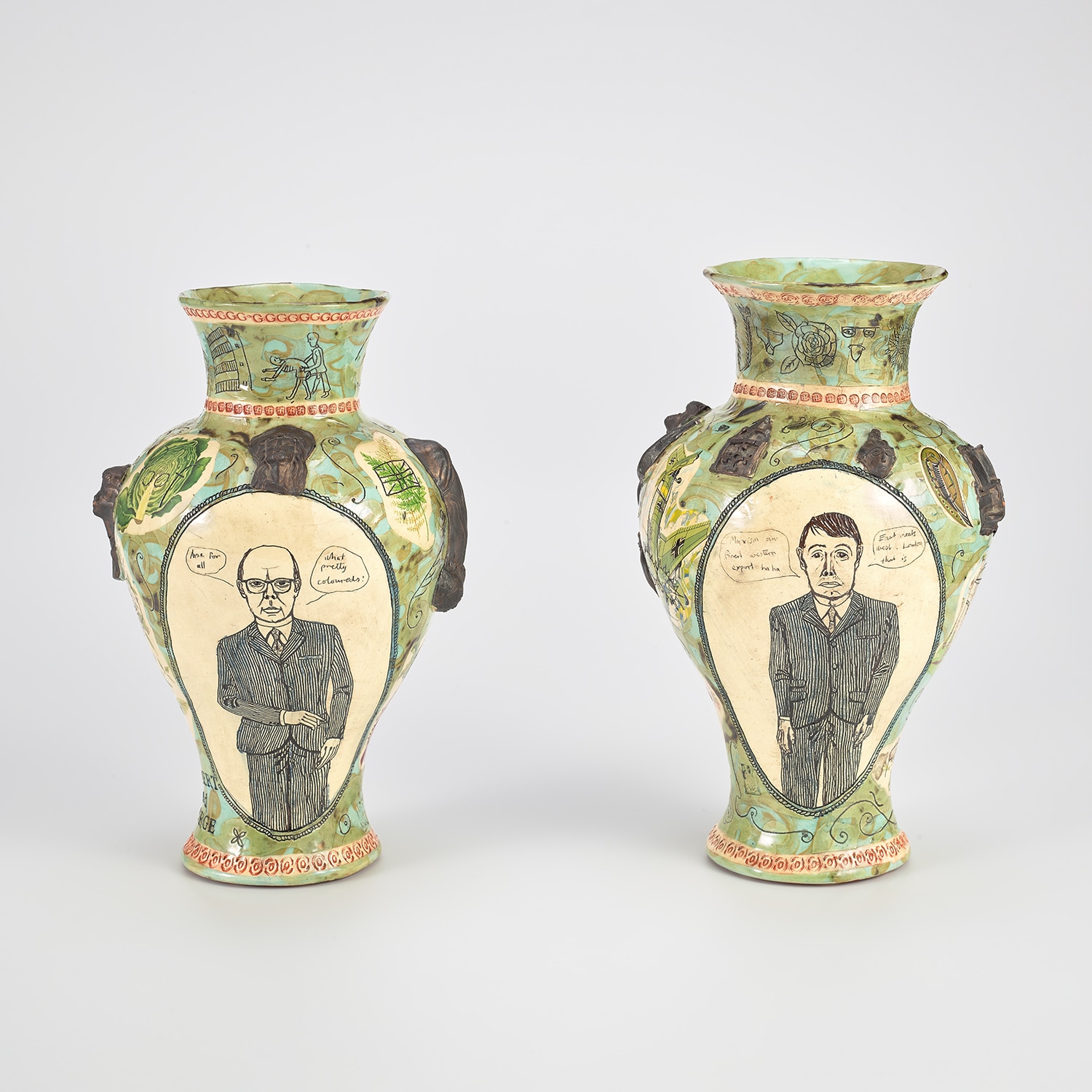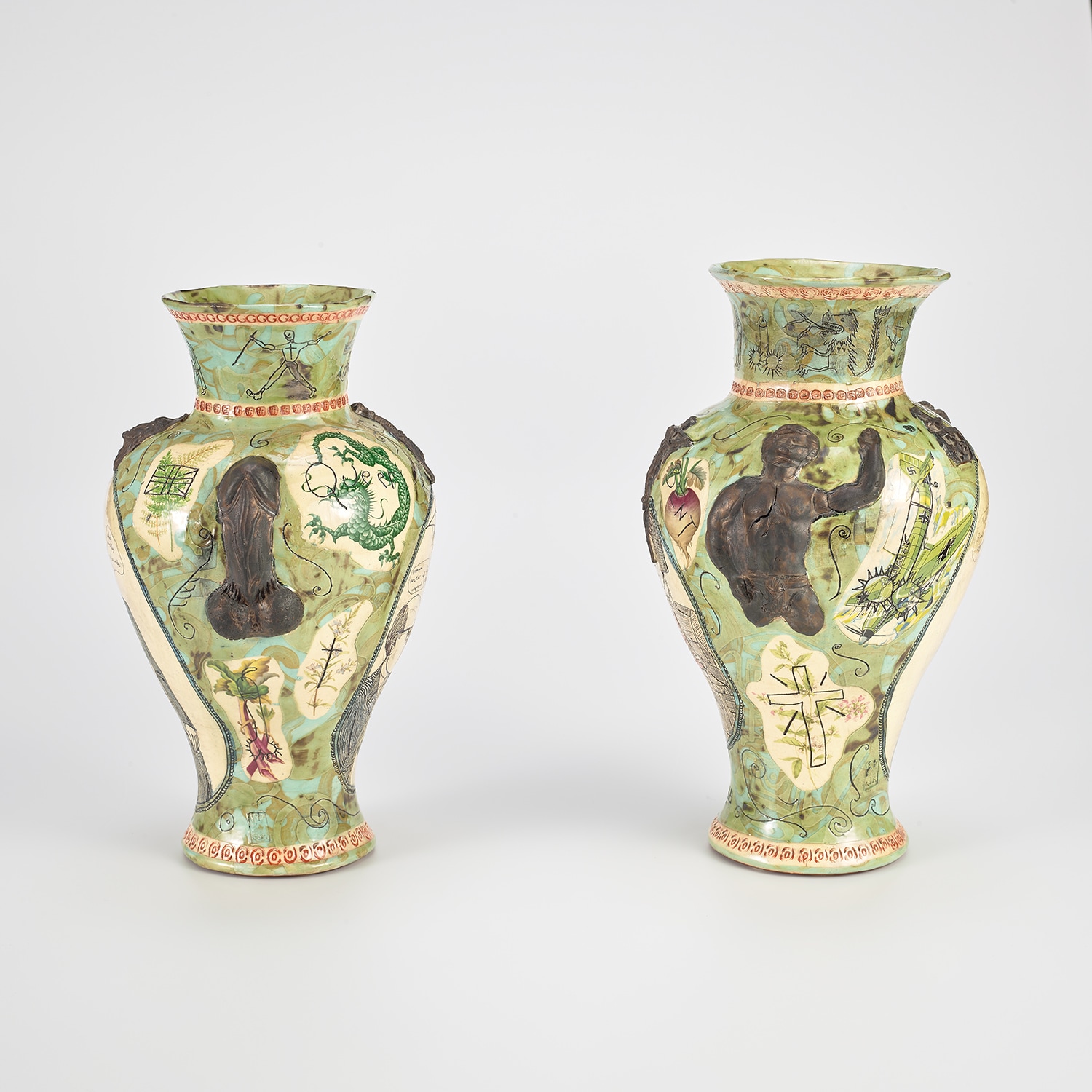







Property from an Important Private Collection
17
Grayson Perry
Gilbert and George in China
- Estimate
- £80,000 - 120,000♠
£76,200
Lot Details
two glazed ceramic vases
stamped with the artist’s monogram and titled ‘GILBERT and GEORGE in CHINA’ lower edge
(i) 38.4 x 25.5 x 22 cm (15 1/8 x 10 x 8 5/8 in.)
(ii) 38.8 x 26 x 25.2 cm (15 1/4 x 10 1/4 x 9 7/8 in.)
(ii) 38.8 x 26 x 25.2 cm (15 1/4 x 10 1/4 x 9 7/8 in.)
Executed in 1993.
Specialist